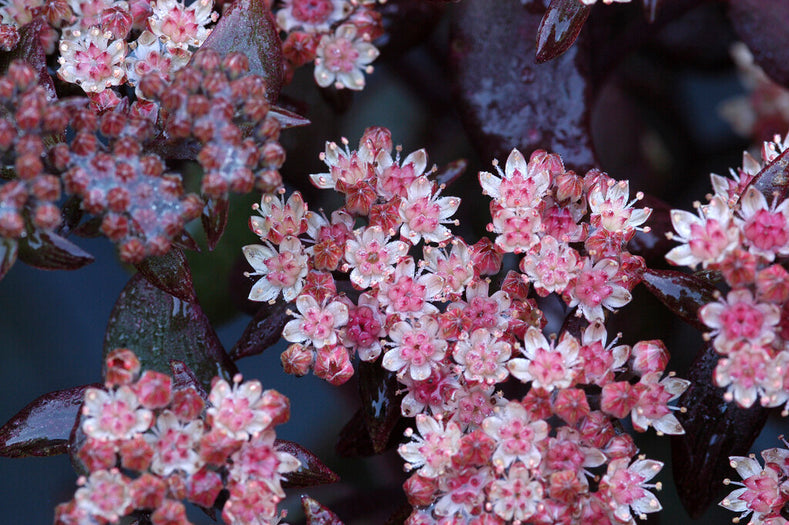Sedum, commonly known as Stonecrop, stands out as a versatile and robust genus of succulent plants, widely embraced in gardens throughout the UK for its resilience to drought and ease of maintenance. Delve into the details below:
Appearance:
Sedum plants exhibit diverse shapes, sizes, and colours. Characterised by their thick, fleshy leaves, which store water—an adaptation to their native dry and rocky habitats. Leaves can display hues of green, blue, red, or purple, often transitioning throughout the seasons. Sedum varieties encompass low-growing ground covers to more towering, upright specimens.
Flowers:
Clusters of small, star-shaped flowers grace Sedum, offering vibrant shades of white, yellow, pink, or red. These blossoms not only add a burst of colour to gardens but also attract pollinators such as bees and butterflies from late summer through fall.
Growth Habit:
Sedum showcases versatility in its growth habits, ranging from low-spreading ground covers to upright plants of several feet in height. Low-growing types work well as ground covers, while taller varieties contribute height and structure to garden beds.
Hardiness:
Known for exceptional hardiness, Sedums exhibit resistance to drought, heat, and challenging soil conditions.
Uses in Landscaping:
Appreciated for their low maintenance and aesthetic appeal, Sedums find common usage in rock gardens, borders, and as integral components of xeriscaping designs. Their suitability for container gardens and green roofs, owing to shallow root systems and tolerance for poor soil conditions, adds to their popularity.
Soil and Sun Requirements:
Thriving in well-drained soil, Sedums prefer full sun but can tolerate partial shade. Ideal for challenging areas like slopes, rocky terrains, and urban environments.
Care and Maintenance:
Sedum demands minimal care, with occasional watering during dry spells and periodic division to maintain vitality and prevent overcrowding.
Growing Guide for Sedum (Stonecrop):
Choosing the Right Location:
Select a spot receiving at least 6 hours of sunlight daily, though Sedum can also tolerate partial shade.
Soil Requirements:
Opt for well-drained soil, amending heavy or clay soil with sand or gravel if necessary. Sedum thrives in relatively poor conditions.
Planting:
Plant in the spring, after frost risk has passed. Dig a hole twice as wide as the root ball, place the plant, and gently fill with soil.
Watering:
While drought-tolerant, provide water, especially during the initial growing season. Once established, Sedum requires minimal watering.
Fertilising:
Apply balanced, slow-release fertiliser in spring if desired, avoiding over-fertilization.
Pruning:
Prune in early summer to maintain shape and encourage bushier growth. Remove dead flowers and foliage in late fall or early winter.
Winter Care:
In colder regions, protect roots with a layer of mulch during extreme cold spells.
Pest and Disease Management:
Generally resistant, monitor for issues like snails, slugs, or fungal diseases in overly moist conditions.
Propagation:
Easily propagate through cuttings or division during the growing season.
Container Growing:
Thrives in containers with adequate drainage holes and well-draining potting mix.
By adhering to these guidelines, you can cultivate and relish Sedum in your garden successfully.

